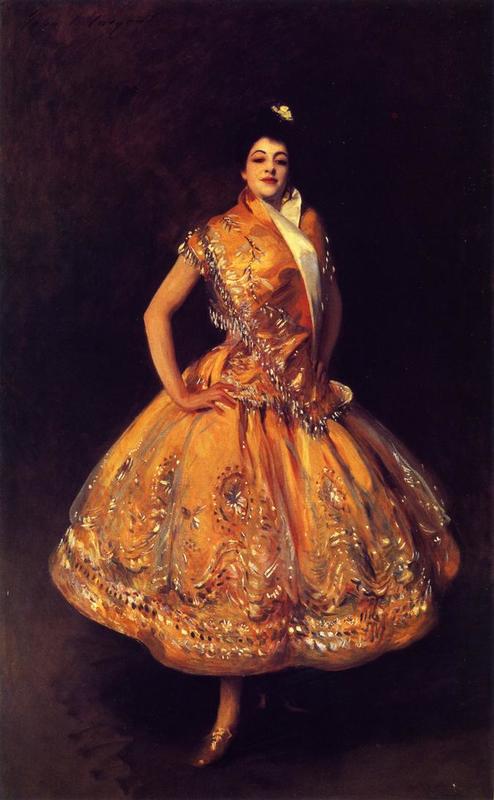More about The Carmencita

Contributor
Sargent painted plenty of stuffy society folks in his day.
No shame in that - most artists know that commissions for fancy people pay the bills. But at heart, Sargent was a bohemian weirdo. In his social life he consorted with intellectuals, artists and performers, and his portraits of these colorful, high-drama characters are transfixing.
Carmen Dauset Moreno went by the stage name La Carmencita. She was a renowned Spanish dancer who had trained as a ballerina, but whose flamboyant stage presence earned her a reputation as a glamorous vaudeville seductress. Sargent first saw her dance in Paris in the late 1800s. They got to know each other better when she came to New York to dance at the legendary, old-timey venues Koster and Bial’s Music Hall and Niblo’s Garden, and started hanging out in Sargent’s social circle.
Sargent was a fanboy, to say the least. He’d throw parties just as an excuse to have Carmencita dance for his guests. Eventually, he plied her with enough treats and jewelry to persuade her to pose for a portrait. Unfortunately for Sargent, Carmencita was not the most cooperative of models; she was rumored to have fidgety dancin’ feet and couldn’t sit still. But she was also easily amused, so Sargent would *allegedly* try to hold her attention with stunts like painting his nose red or eating his cigar (ew) while she posed for him. As a performer, Carmencita was naturally more comfortable in front of the camera than the canvas. She was the first woman to bust a move for Thomas Edison’s motion picture camera in 1894.
When her portrait debuted in 1890, some critics called it the “picture of the year.” Others referred curiously to its “halo of decay,” that dark aura that seems to encircle La Carmencita’s alluring likeness. She’s immortalized as the captivating character that she must have been in real life.
Sources
- Dini, Jane A. “A Celebrated Return Engagement.” The Met. September 22, 2015. Accessed December 3, 2017. https://www.metmuseum.org/exhibitions/listings/2015/sargent-portraits-o…
- ixon, Christine. “John Singer Sargent.” National Gallery of Australia. 2009. Accessed December 2, 2017. https://nga.gov.au/exhibition/masterpiecesfromparis/Default.cfm?IRN=191…
- Tarmy, James. “The Surprisingly Risqué World of Society Painter John Singer Sargent.” Bloomberg Pursuits. June 25, 2015. Accessed December 1, 2017. https://www.bloomberg.com/news/articles/2015-06-25/the-surprisingly-ris…
- Thomas A. Edison, Inc. “Carmencita.” Library of Congress. Accessed December 2, 2017. https://www.loc.gov/item/00694116/
- W.H. Downes, "John Sargent," p. 31, citing H. J. Brock, "John Sargent, Man and Painter: Death of Modern 'Old Master' Releases Flood of Anecdote Regarding One of the Most Debated Figures in the Art World," New York Times, 19 April 1925, 5.











